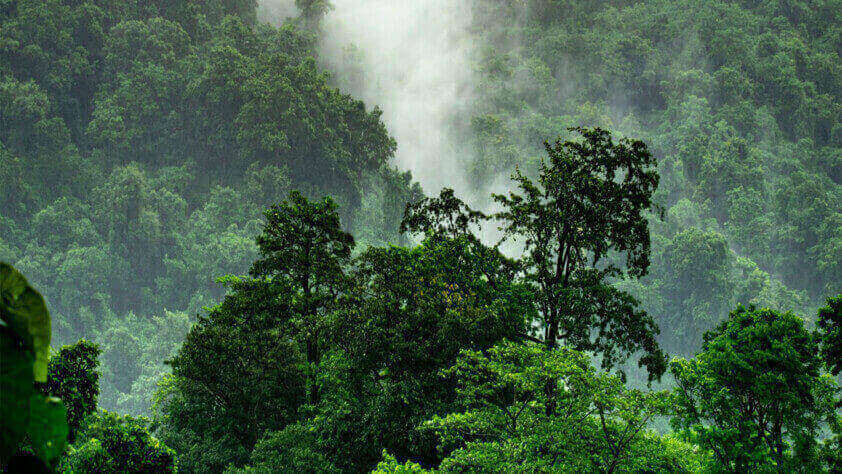In a first-of-its-kind study published in Nature last year, environmental scientists at the International Institute for Sustainability (IIS) in Rio de Janeiro, Brazil, found that prioritizing where ecosystem restoration happens can have an outsize impact on the achievement of key environmental goals while substantially lowering the costs of doing so.
Now that study, “Global priority areas for ecosystem restoration,” and its multi-criteria spatial-planning approach will contribute to the technical and scientific analysis of global goals and targets at the U.N. Convention on Biological Diversity’s upcoming meetings of the Subsidiary Body on Scientific, Technical and Technological Advice, says one of the paper’s authors, David Cooper, who is also deputy executive director of the Convention (CBD). Those discussions will feed into final negotiations on the new global framework on biodiversity conservation, which is set to be put forth by the CBD later this year and will shape national and international agendas for biodiversity for until 2030.
“Place really matters,” says Cooper, summing up one of the study’s main findings. “It’s not just about hectares. It’s about prioritization. With prioritization you can get more biodiversity and other benefits including climate benefits from a smaller area.”
Led by Bernardo Strassburg, co-founder and director of the IIS, a team of 27 researchers in 12 countries used an optimization platform called PLANGEA to assess 2,870 million hectares of ecosystems worldwide that have been converted to farmland. They found that returning just 15 percent of these areas back to nature could avoid 60 percent of expected wildlife extinctions and sequester almost 300 gigatons of carbon dioxide. Double that percentage, and 72 percent of extinctions could be avoided.
A whopping 465 gigatons of carbon dioxide would be sequestered – more than 45 percent of the total increase of carbon dioxide in the atmosphere since the Industrial Revolution.
Many of the top priority areas are in tropical regions, including Southeast Asia, the Caribbean, and coastal parts of West Africa and South America.
In carrying out their study, scientists employed a European Space Agency map that broke down the Earth’s surface into a grid of parcels classified by ecosystem: forests, wetlands, shrublands, grasslands and arid regions. They developed “a multi-criteria approach for optimizing several outcomes of restoration (biodiversity conservation, the mitigation of climate change and costs) that explicitly accounts for biome-specific differences in restoration outcomes,” the paper states, “and applied it globally and across all terrestrial biomes.”
Crucially, they found that restoring priority areas using their multi-criteria framework can make restoration 13 times more cost effective than sticking to one criteria on any given land parcel alone.
“Restoration and conservation are two of the most by far cost-effective measures that allow us to address multiple global challenges simultaneously,” says Strassburg. “And we show that if we plan for these outcomes from the start – at the same time – that makes a world of difference.”
Although forests are important, all ecosystems have a role to play in regulating climate and protecting biodiversity, he says. Prioritizing the conservation and restoration of wetlands is a prime example. “If you restore a hectare of wetland,” he says, “you really contribute proportionally more for a species that depends on wetlands, bringing back a larger fraction of their habitat. And quite a few species depend on wetlands. As for carbon, especially carbon under the soil, an enormous amount of biomass is sequestered if you restore.”
The CBD, says Cooper, is working with the IIS to now apply the PLANGEA framework in different countries and regions to help them prioritize their restoration goals. “It is only a tool,” he specifies. “We don’t want this to be seen as something prescriptive, but something that has to be worked out at the international level, at the local level, [including] what local communities and Indigenous peoples would have to say about this, and then also looking at the need for ecosystem services beyond the ones looked at here. So the restoration of a landscape, even if it’s suboptimal for biodiversity, for example, may still be really important in terms of local services supporting agriculture, like pollination, water quality and other services.”
With institutions involved with conservation and restoration in Mexico, the Democratic Republic of Congo and India already interested in using the framework, “we would,” he adds, “in the context of the U.N. Decade on Ecosystem Restoration, work with them to explore some of these options, to see how we can tailor it to the needs of those countries.”
The Decade on Ecosystem Restoration, which launches in June 2021 and will run until 2030, seeks to tackle global challenges and achieve the sustainable development goals through the benefits given by restoring ecosystems.
Indeed, says Cooper, “the more you focus on agricultural productivity in a sustainable way, the more you will be able to advance restoration and conservation.”
Synergies exist between restoring degraded agricultural systems back to productivity and increasing biodiversity, resulting in using less land to produce more food sustainably.
“So if we’re restoring a fraction of an agricultural landscape back to more native vegetation, while trying to restore or rehabilitate degraded agricultural areas, these could be and would be expected to be synergistic,” says Cooper. “The native vegetation can help with things like water regulation, creating reservoirs for pollinators, stopping erosion, and so on. And hence, if by that combination of things, you increase the productivity of farmland, you need less of it.”
The prioritization framework would mean that some countries might restore more land than others. “It would need to be looked at case by case and country by country,” he says, “through a participatory approach.”
“There are major gains to be won in international collaboration,” says Strassburg. “If countries collaborate, and we restore as much as possible in priority areas from a global standpoint, it will be much more impactful for the challenges we need to overcome – and it will be cheaper.”



